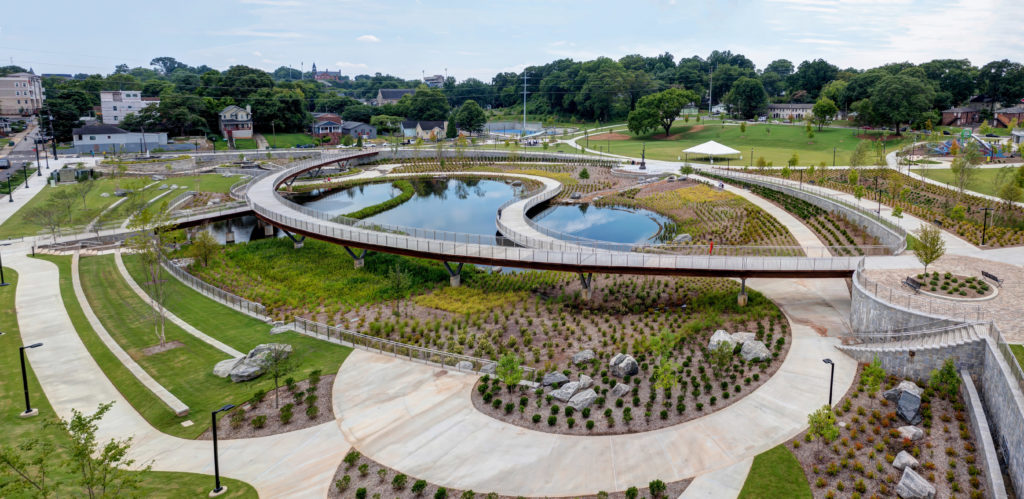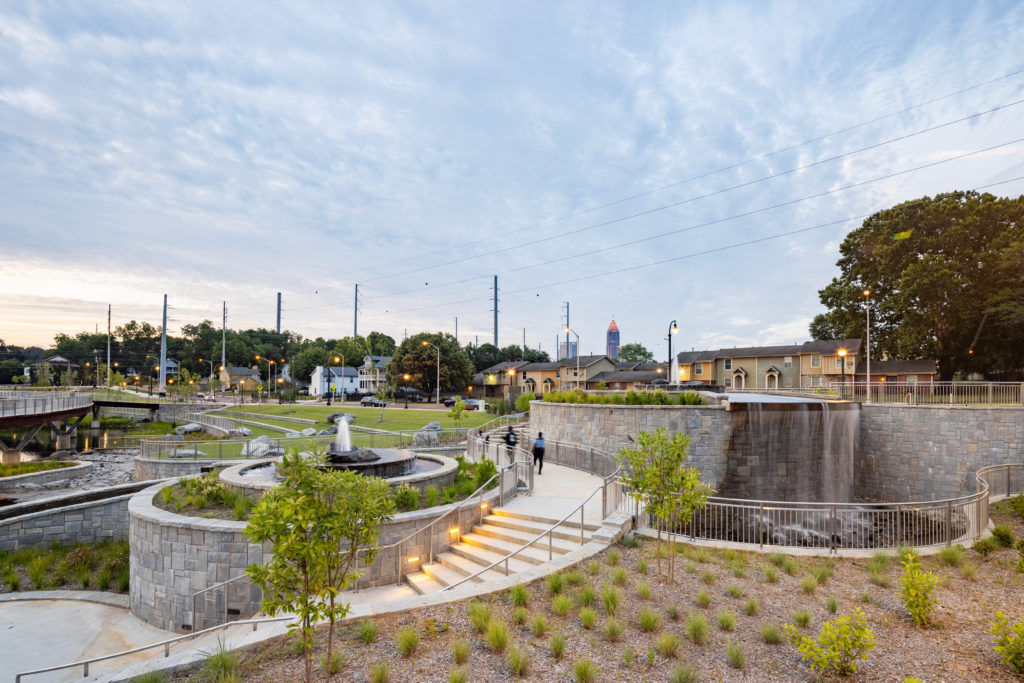Last updated on February 10th, 2025

When many of us think of conservation and Natural Climate Solutions, cities may not be the first places that come to mind. We might imagine vast spaces like national parks, forest preserves, or coastal ecosystems. But conservation is not only the preservation of wilderness – it can also integrate into urban areas through city parks and thoughtful planning of the entire urban landscape. For some communities where green spaces are common, this comes as no surprise. But many neighborhoods, particularly communities of color, lack the benefits of a nearby greenspace. People of color are three times as likely to live somewhere that is nature-deprived than predominantly white communities. This “nature gap” leads to disproportionate health and economic impacts due to poor air quality, urban heat islands, limited exercise and recreation opportunities, and greater risks from severe weather.
Cities around the United States are addressing this equity issue by listening at the local level, and the Trust for Public Land is helping communities plan for urban green spaces that provide numerous social, environmental, and climate benefits. One such example of urban conservation has taken place in the middle of west Atlanta’s historic Vine City neighborhood. The area has long been home to African American luminaries like Dr. Martin Luther King Jr. It sits adjacent to the nation’s oldest and largest association of historically Black colleges. It’s also been a “center of gravity for activism and leadership during the civil rights movement of the 1950s and 1960s,” and has been a “home for generations of Black scholars, business owners, and activists.”
The neighborhood is also in a lower-lying area where Proctor Creek once flowed before it was channelized and buried in the early 1900s. As development expanded, naturally absorbent lands were replaced with pavement and other impervious surfaces that send stormwater into an already stretched stormwater system. All of these factors combined to put the neighborhood at increased risk for flooding during storms. In September 2002, days of heavy rainfall overwhelmed the sewer system and flooded hundreds of homes, many of which became uninhabitable. The cost of rebuilding the homes – and risks of a repeat flooding incident – were deemed too great, and city leaders decided to relocate residents and raze more than 60 properties.

The Trust for Public Land partnered with the City of Atlanta, the local community, and a network of generous donors, innovative consultants, and experienced contractors to create a space that will make the site and the surrounding community more resilient as storm events continue to become more significant and frequent. This was accomplished by creating a dynamic park that has the ability to collect and manage 9 million gallons of stormwater from the 160 acres adjacent to the site using innovative green infrastructure solutions. Without the park and its specialized green infrastructure, flooding would have continued to wreak havoc on this neighborhood.
This summer, the neighborhood completed this transformation from tragedy to triumph, as Vine City celebrated the opening of Cook Park. It is now a “gleaming new space of trees sprouting and gardens of native grasses and plants filling in their beds. Walking paths wind past new playground and exercise equipment centering a two-acre pond ringed with wildlife-friendly wetlands.”
As with any successful conservation initiative, this project relied on partnerships and community engagement. The opportunity to work with Vine City and English Avenue residents, helping address these topics through the creation of a best-in-class park is a perfect example of how the process can be as important as the outcome. Through community festivals, neighborhood association and church gatherings and formal presentations, residents became vital partners to The Trust for Public Land and the City of Atlanta as we strived together to create a space that, in addition to reducing the risk of dangerous flooding, inspires physical activity, calms nerves and draws people together.

We are excited that the design, planning, and construction of the park positioned it well to become a center-point for outcome-based, health-focused recreation services and planned fitness programming when it finally opened. Over the project’s six-year lifespan so far, we have partnered with a number of small, neighborhood-based or neighborhood-focused organizations to provide health-centric programming. Urban Perform, the Arthur M. Blank YMCA, and Chris 180, to name a few, are poised to use climbing boulders, sport courts, and fitness equipment as soon as social distancing restrictions are lifted. The relationships we have formed with neighborhood groups and individual residents have allowed a more efficient and inclusive transition from design to construction to stewardship.
Lastly, while not the primary goal, the park can also help mitigate climate change by planting trees. Research by University College London has shown that urban forests can store nearly as much carbon per hectare as tropical rainforests. In the U.S., the top 100 largest U.S. cities alone contain approximately 2 million acres of city park space; collectively these conservation efforts add up to make a big difference. And with Cook Park, Atlanta is one step closer to its goal of putting a great park within a 10-minute walk of every resident.
For more information on Cook Park and the Trust for Public Land:
